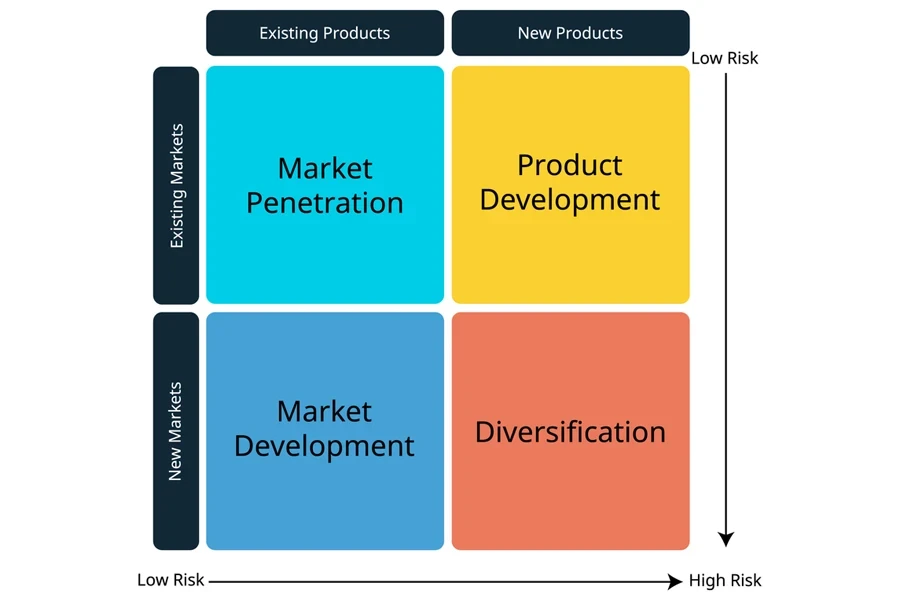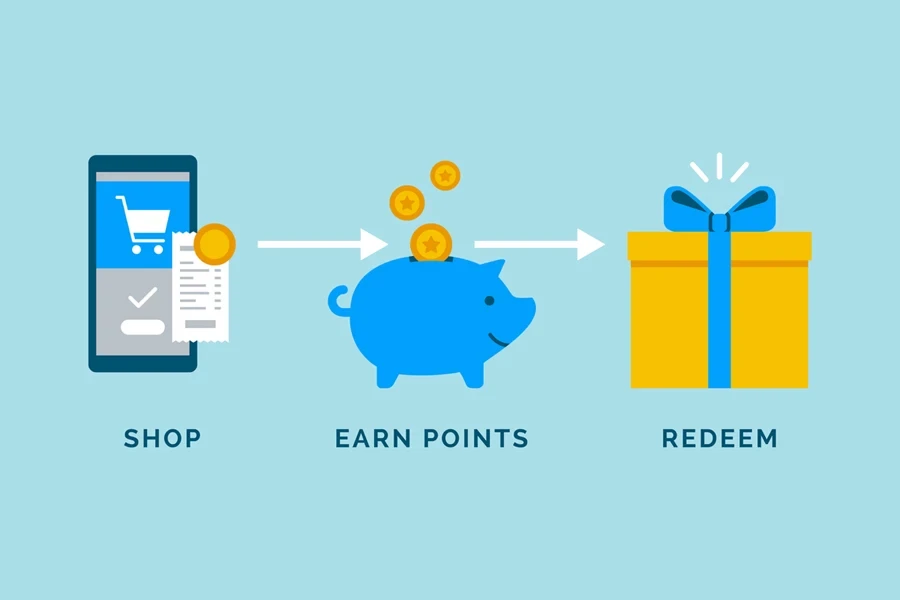Everyone wants to see their business grow; business growth generally means increased revenue, brand awareness, and customer loyalty. So, what every business owner wants to know is what they can do to grow. How can they become as successful as the names we all know, like Apple, or Amazon.
There are many different ways for your business to grow, but here, we will discuss market penetration.
Table of Contents
Understanding market penetration
Market penetration vs market development
Market penetration strategies – How to achieve better market penetration
Market penetration example and success story
Next step: Monitor and adjust market penetration strategy
Advantages and disadvantages of market penetration
Final thoughts
Understanding market penetration
What is market penetration? Market penetration is a calculation of how much of the market your product or service takes up. This means it measures how much of a product or service is sold compared to the total market.
How to calculate market penetration
To calculate market penetration, you divide the current sale volume by the total sale volume of all similar products currently available in the market.
The formula:
Market Penetration Rate = (Number of your customers / Total Market Size) X 100
Example Calculation:
Suppose you own a fitness app with 50,000 active users. If the total potential market for fitness apps in your region is 500,000 people, your market penetration rate would be:
(50,000 / 500,000)×100 = 10%
This means your app has penetrated 10% of the total potential market.
Why is high market penetration good?
High market penetration means you are a leader in your industry, which offers many advantages and opportunities for continued growth. For example, recognized brands are more likely to be visible in the market and get better shelf space in brick-and-mortar stores. Also, leaders in the market can often negotiate better terms with suppliers due to sales volume, increasing their overall profit margin.
So, how can you achieve a high market penetration rate? A good market penetration strategy is one major way. So, let’s get into it.
Market penetration vs market development
When discussing market penetration, you often come across the Ansoff Matrix– a planning tool that helps businesses determine which growth strategies to focus on.

As you can see in the photo above, the least risky growth strategy for businesses is market penetration.
While market penetration focuses on maximizing sales in the existing market to increase overall market share, market development is a strategy for expanding a business’s reach into new markets.
Here, we focus on market penetration. However, businesses often use multiple strategies within the Ansoff Matrix simultaneously. The right strategy for your business depends on several factors, such as market conditions, the competitive landscape, business resources, and goals.
Market penetration strategies – How to achieve better market penetration

A market penetration strategy involves a few steps, including market research, setting clear objectives, and implementing targeted market penetration strategies.
Before getting into the specific strategies, let’s talk about market research and goal setting.
Understanding the landscape of the current market is crucial to helping your business set practical and effective market penetration goals and determine the best strategies to achieve them. Consider asking yourself the following questions:
- What do your specific customers want, and how can your product meet those needs better than your competitors?
- What are the current market trends, and can your product align with those trends?
- Who are your current competitors, and what are their strengths and weaknesses?
Then, set your goals. Think about setting SMART goals—specific, measurable, achievable, relevant, and time-bound.

Some examples of goals are:
- Achieve a 15% increase in sales in the next six months.
- Increase market share by 10% within one year.
- Expand existing customer base by 20,000 in the next quarter.
Now, we will examine specific strategies your business can employ to improve market penetration.
Price adjustment

A competitive pricing strategy is critical to a successful business, and one of the best ways to attract new customers is to adjust your prices.
You may automatically think price adjustment means lower prices to attract more customers. While this can be an effective strategy, there are many ways of considering pricing. Your pricing strategy should align with your customer experiences and your brand positioning. Additionally, you want to consider your profit margin.
So, in addition to lowering (or even raising) your prices, a new pricing strategy could include offering tired pricing that appeals to a broader consumer base or using discounts or promotions to attract new customers.
The goal is to strike a balance between your product’s perceived value and your customers’ overall purchasing power.
Learn more about pricing strategies and how customer surplus can impact pricing.
Increase marketing efforts

Marketing efforts are how new customers find out about your brand. So, take the time to review and adjust your marketing strategy.
Before getting into marketing strategies like social media, email marketing, or paid ads, take the time to look at your SEO strategy. Is your website ranking for any of your target keywords? Consider areas where you can improve on SEO to increase the number of customers who find your business through organic search.
Then, take a look at your other marketing strategies. In what areas are you doing well, and where could there be an improvement? Are there new marketing campaign strategies you could try?
For example, take a look at how your social media posts are performing and the customers you’re currently reaching. Are there ways to improve your content? Is it time to consider paid social ads? Or maybe there is a new strategy you want to try, like a call for user-generated content or engaging with influencers.
Remember to think about segmenting your target audience. By sorting your audience into unique segments, you can tailor your marketing message directly to them.
Want to learn more about marketing strategies? Here are some articles to get you started:
- Top Digital Marketing Trends for Businesses in 2024
- How To Use an Inbound Marketing Content Strategy To Grow Your Business
- 7 Reasons Your Business Needs a Blog
- How to Optimize Blogs for SEO
- Email Marketing: Unveiling Its Core and How It Transforms Businesses
- Email Marketing Trends: Refreshing Your Strategy in 2024
- How To Get Started With Social Media Marketing
- Social Media Marketing: What Is User-Generated Content and Why Is It Important?
- Beginners Guide to Affiliate Marketing for Businesses
- 9 Practical Steps for Creating a Successful Video Marketing Strategy
And remember to stay up-to-date with Alibaba.com Reads where we share the latest marketing trends.
Product improvements

Businesses should always be thinking about making improvements to existing products based on customer feedback. If possible, make changes to a product to resolve challenges current customers are experiencing (or, where relevant, consider adding features).
Improving a product can also entice existing customers to upgrade and purchase the new iteration, just like how Apple improves its iPhone every year with new features to keep customers returning.
If you’re unable to make product improvements, consider product differentiation. Consider how to make your product different from your competitors to create a unique selling point and attract new customers.
What does product differentiation look like? This could include anything that sets your business apart from the competition, from exceptional customer service to unique or eco-friendly packaging.
Distribution channel expansion

Expanding distribution channels makes your product more accessible to potential customers.
You may wonder how your business can expand distribution channels if your sales are online. Here are some ideas of what this may look like for your business:
- Marketplace integration – expanding into online marketplaces like Amazon or Etsy can boost your visibility and sales.
- Social commerce – you can leverage social media platforms to sell directly to consumers.
- Subscription boxes – offering subscription boxes can expand distribution channels by creating recurring revenue.
- Affiliate programs – you can expand your reach by partnering with third-party marketers such as affiliates.
- Partnerships with complementary brands – consider partnering with another brand to create cross-promotional opportunities.
Create customer loyalty initiatives

Loyalty programs increase the likelihood of customers continuing to choose your products over competitors. Additionally, good customer loyalty programs that make customers feel good about their loyalty to your brand increase the likelihood of them becoming brand ambassadors by talking about your company with others.
The most common customer loyalty programs online retailers use are points-based programs, referral programs, and VIP memberships.
Acquire competitors
For businesses with the budget to do so, acquiring direct competitors can be a strategic move. Not only does this eliminate that competitor, but it broadens your potential customer base as well as your potential resources.
Market penetration example and success story: eBay
eBay, founded in 1995, is a well-known online marketplace that facilitates consumer-to-consumer and business-to-consumer sales. While eBay was initially a pioneer in e-commerce, it faced intense competition from companies like Amazon and newer entrants. eBay implemented several strategic changes to improve its market penetration and regain a larger market share.
- Price adjustment: eBay introduced competitive pricing strategies to attract more buyers and sellers to its platform. These included reducing seller fees and incentivizing more individuals and businesses to list their products on eBay. They also offered discounts and promotional pricing to attract more buyers, especially during peak shopping seasons.
- Increased marketing efforts: eBay launched targeted advertising to reach specific demographics, emphasizing the value and variety of products available on the platform. eBay’s marketing also highlighted the convenience and security of buying and selling on their platform, aiming to rebuild trust and attract new users.
- Product improvements: eBay invested in improving its platform to enhance the user experience. This included updating the website and mobile app for better navigation and faster load times. They also integrated advanced search algorithms and machine learning to provide more personalized recommendations and improve the shopping experience. eBay introduced features like “Guaranteed Delivery” and “Authenticated Luxury” to ensure timely delivery and verify the authenticity of high-value items.
- Distribution channel expansion: eBay expanded its distribution channels by partnering with major retail brands and incorporating their inventories into the eBay platform. This move allowed eBay to offer a wider range of products and attract more buyers looking for brand-name goods. They also enhanced their global shipping program to make it easier for international buyers to purchase items from eBay sellers, expanding their market reach.
- Customer loyalty programs: To increase customer retention, eBay introduced loyalty programs such as eBay Bucks, which rewarded buyers with a percentage of their purchases as eBay credits. They also created targeted promotions for repeat buyers and offered special deals for members of their eBay Plus program, similar to Amazon Prime, which provided benefits like free shipping and exclusive discounts.
- Acquiring a competitor: In a strategic move, eBay acquired several smaller e-commerce platforms and niche marketplaces to broaden its market presence. For instance, acquiring StubHub allowed eBay to dominate the online ticket resale market while purchasing Giosis’ Japanese business, expanding its reach in Asia. These acquisitions helped eBay tap into new customer segments and consolidate its market position.
eBay’s strategic initiatives revitalized its growth. By 2020, eBay reported significant increases in active buyers and sellers on the platform. The improved user experience and competitive pricing helped attract new users while retaining existing ones.
Next step: Monitor and adjust market penetration strategy

Creating a market penetration strategy is not a one-time endeavor. It’s important to regularly monitor the performance of your market penetration efforts (look at sales volume, market share, and customer acquisition rates) and adjust your strategy as needed.
Once you’ve reached your market penetration goal’s end date, you can recalculate your market penetration rate to determine if you’ve met your goals.
What is a good market penetration rate?
- For consumer products, between 2% and 6%
- For business products, it’s 10% to 40%.
You should benchmark your rate against other competitors in your space.
If you’ve achieved your goal and have a high market penetration rate, it may be time to focus your efforts on retaining existing customers or exploring growth opportunities in other markets or with new products.
Advantages and disadvantages of market penetration
While market penetration is one of the least risky strategies in the Ansoff Matrix, there are still some possible risks, and it’s important to address them. But first, we will briefly mention some of the advantages.
Advantages of market penetration
1. Increased sales and product visibility: For most companies, increasing market penetration directly translates to an increase in sales. It also often results in higher visibility for products.
2. Economies of scale: As market share increases, companies can achieve economies of scale, where higher production volume leads to lower costs and therefore increases profit.
3. Product differentiation: A big part of an effective market penetration strategy is finding what differentiates your product from others on the market; this differentiation helps to attract and retain customers.
4. Improved brand equity: As public recognition of your company grows, so does its perceived value.
5. Strategic pricing power: With a greater market presence, companies begin to gain more control over pricing and can set their own prices and terms.
Disadvantages of market penetration
1. Risk of brand dilution
Expanding into new markets or offering new products carries the risk of diluting a company’s existing brand image. If not executed carefully, market penetration strategies can create inaccurate public perceptions or attract a customer base that doesn’t align with the company’s strategic goals.
For instance, if a luxury brand like Rolex were to start offering budget-friendly watches, it might dilute its prestigious image.
2. Potential for product liquidation
If new products or services do not resonate with consumers in penetrated markets, companies may be forced to liquidate inventory at discounted prices. This can erode profit margins and damage the brand’s perceived value.
A notable example is when BlackBerry, once a market leader in the smartphone market, had to discount its devices heavily due to declining popularity and market share.
3. Misalignment with the target market
Despite efforts in market segmentation, market penetration can sometimes attract the wrong customers. This misalignment can disrupt a company’s marketing strategy, especially if the business aims to cater to a specific customer willing to pay a premium for quality goods.
For example, if Apple accidentally attracts bargain hunters seeking the lowest prices, it faces a dilemma in maintaining its premium brand positioning.
4. Operational strain
Market penetration is not a single event but a comprehensive strategy requiring alignment across the organization. Manufacturing, warehousing, procurement, and sales departments must work cohesively to support deeper market presence. Misalignment can put undue pressure on specific departments, leading to inefficiencies and operational strain.
For instance, if the sales department aggressively penetrates new markets without adequate support from manufacturing, it can lead to supply chain disruptions and customer dissatisfaction.
5. Competitive response
Competitors may respond aggressively to your business’s market penetration strategy to protect their market share. This can lead to price wars, increased marketing expenditures, and other competitive tactics that can erode profitability.
For example, when a new airline enters a market with low fares, established airlines often retaliate with competitive pricing, impacting the profitability of all players involved.
Market penetration is a potent strategy for business growth, offering numerous advantages such as increased sales, enhanced visibility, improved brand equity, strategic pricing power, product differentiation, and economies of scale. However, it also comes with potential drawbacks, including the risk of brand dilution, product liquidation, misalignment with target markets, operational strain, and competitive responses. Companies must carefully plan and execute their market penetration strategies to maximize benefits while mitigating risks.
Final thoughts
Market penetration is a powerful strategy for businesses to grow their market share and increase revenue.
Remember, successful market penetration requires a deep understanding of the market, clear objectives, and the implementation of targeted tactics. Additionally, regular monitoring and adjustment of strategies are also essential to stay ahead in the competitive landscape.
With the right approach, market penetration can increase brand recognition, customer loyalty, and long-term success.




